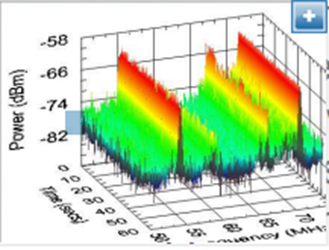Industry Throws Support Behind FCC's Spectrum Noise Study
By Jof Enriquez,
Follow me on Twitter @jofenriq

Industry stakeholder feedback overwhelmingly calls on the Federal Communications Commission (FCC) to begin a study of the radio spectrum noise floor — almost two decades after the agency first planned it for spectrum management amid the proliferation of devices emitting RF noise.
The FCC in June issued a public notice inviting comments and answers to questions about the rising noise floor in the radio spectrum, and missing quantitative data to support this presumption. The agency's Technological Advisory Council (TAC) sought feedback on how best to design and conduct a noise study. In comments submitted through August 11, several parties expressed their support for the long-delayed but much-needed research into the issue.
The Society of Broadcast Engineers (SBE) noted that FCC requested TAC study the noise floor back in 1999 as a prerequisite for an improved spectrum management plan, "Yet, sixteen years later, no such study has been conducted. Now, and for the past several decades, new noise sources are being developed and have been developed and the proliferation of electronic devices continues as fast as the technology and the regulatory processes will allow."
"Because the Commission’s resources are woefully inadequate to address RF noise through widespread enforcement of Part 15 and Part 18 rules governing RF emitters after the devices are deployed, the only reasonable means of dealing with them is to enact and enforce, ex ante, appropriate rules for RF emitters that are based on actual knowledge of the noise floor and trends over time," proposed the engineering association. "The need for a comprehensive evaluation of the ambient noise environment, especially in the medium-frequency (MF), high-frequency (HF), VHF, UHF and low microwave ranges is more compelling all the time."
The American Radio Relay League (ARRL), the national association for amateur radio, described FCC's planned study as "long overdue."
ARRL suggests that the study find out "what noise levels exist in as wide a range of indoor and outdoor environments as possible" and "what types of noise are being found: Broadband, non-specific noise; broad noise spectral peaks; broadband digital noise; and noise occurring on discrete frequencies."
“We also hope that these comments will serve as a stimulus for the Commission to re-evaluate its ‘hands-off’ policy with respect to the most recalcitrant and unhelpful operators of incidental and unintentional radiators which are causing long-term interference problems, such as electric utilities,” ARRL concluded.
TAC's public notice identified these contributors to noise: incidental radiators, including most electric motors, light dimmers, switching power supplies, utility transformers and power lines; and unintentional radiators, including computers, portable electronic devices, and new high-efficiency lights.
“Given the growing deployment of energy-efficient lighting products for traffic control, commercial lighting and residential lighting, it is likely that contributions to the noise floor from these devices will grow as well," wrote The National Public Safety Telecommunications Council (NPSTC). "Therefore, NPSTC recommends this issue be examined further with the goal of preventing noise and interference rather than having to resolve it after the fact once energy-efficient lighting devices are deployed ubiquitously in the field."
NPSTC also called on TAC to study RF noise from wind farm systems and solar system power inverters, as well as from out-of-band emissions as cell sites proliferate, and recommended to "use higher bandwidth channels and co-locate multiple systems on the same on structure where external intermodulation products can increase."
The U.S. wireless industry trade group CTIA wrote that, while it generally supports initiatives by the TAC to study the radio spectrum noise floor, it "urges caution, however, that investigation of the noise floor should not lead to the erosion of licensees’ rights to fully utilize their spectrum, nor be leveraged to support the introduction of unlicensed or underlay experiments in the Commercial Mobile Radio Service (‘CMRS’) spectrum.”
FCC recently adopted new rules for wireless broadband operations in frequencies above 24 GHz, making the U.S. the first country in the world to make this spectrum available for next-generation wireless services.
Endorsing separate comments submitted by the National Electrical Manufacturers Association (NEMA), a standards association of electrical equipment and medical imaging manufacturers, Dutch conglomerate Philips stated, "A new noise floor study seems to be a critical requirement to establish future spectrum policy that enables the full potential of the Internet of Things (IoT) and Machine to Machine (M2M) communications (NIST, 2016)."
